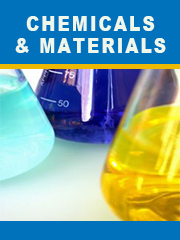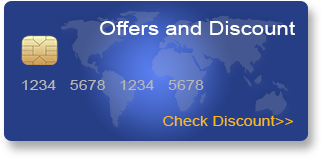TOP CATEGORY: Chemicals & Materials | Life Sciences | Banking & Finance | ICT Media

Bottom Anti-Reflective Coatings (BARC) are specialized thin-film materials applied beneath photoresists in semiconductor manufacturing. They are designed to minimize light reflections during photolithography, enabling precise patterning and enhanced resolution for integrated circuits and microelectronics.
The Asia Pacific BARC market was valued at US$ 287.3 million in 2024 and is projected to reach US$ 398.6 million by 2030, growing at a CAGR of 5.6% during the forecast period. This growth reflects the region's dominance in the global semiconductor industry and increasing adoption of advanced lithography techniques.
Key Statistics:
2024 Market Size: US$ 287.3 million
Projected 2030 Market Size: US$ 398.6 million
CAGR (2024-2030): 5.6%
Historical data indicates steady growth driven by robust demand for high-performance semiconductor components across industries, including automotive, consumer electronics, and telecommunications.
Growth of Semiconductor Manufacturing: The Asia Pacific region, led by Taiwan, South Korea, and Japan, is a global hub for semiconductor production, driving demand for BARCs.
Adoption of EUV Lithography: Increased utilization of extreme ultraviolet (EUV) lithography has boosted demand for next-generation BARC materials.
Rise in Consumer Electronics: Expanding consumer electronics markets in China and India contribute to the increased need for high-resolution chipsets.
Technological Advancements: R&D in sub-10nm node technologies and high-aspect-ratio patterning solutions enhances market opportunities.
High Production Costs: Manufacturing advanced BARCs for EUV lithography involves significant investments, limiting access for smaller players.
Complex Integration: Challenges in compatibility with existing semiconductor processes can hinder adoption.
Emerging Fab Construction in China: Government-backed initiatives to enhance semiconductor self-reliance create new market avenues.
Expansion in MEMS and Optoelectronics: Growing applications of microelectromechanical systems (MEMS) and optoelectronic devices are driving BARC consumption.
Development of Multi-Functional Coatings: Innovations in coatings that offer anti-reflective, anti-static, and other properties present growth potential.
Supply Chain Vulnerabilities: Dependence on critical raw materials and geopolitical tensions pose risks to consistent supply.
Competitive Alternatives: Advances in alternative lithography techniques, such as directed self-assembly (DSA), may challenge BARC adoption.
Taiwan: 35%
South Korea: 30%
Japan: 20%
China, India, and Others: Remaining 15%
Taiwan and South Korea: Home to leading semiconductor foundries, these regions dominate BARC consumption.
China: Significant growth due to extensive investments in fab construction and semiconductor R&D.
Japan: Focuses on high-quality, precision manufacturing, contributing to demand for advanced BARCs.
Brewer Science, Inc. (USA): Known for innovative BARC solutions and a strong presence in Asia Pacific.
Nissan Chemical Corporation (Japan): Specializes in advanced materials for semiconductor lithography.
JSR Corporation: Offers a diverse portfolio of BARCs with a focus on high-performance applications.
Shin-Etsu Chemical Co., Ltd.: A leader in chemical solutions for semiconductor manufacturing.
Fujifilm Corporation: Renowned for cutting-edge lithography materials.
Integrated Circuit Manufacturing: Accounts for 70% of BARC demand, driven by advancements in microchip production.
MEMS Devices: Represents 15%, leveraging BARCs for precise patterning in miniature sensors and actuators.
Optoelectronics: Comprises 10%, with applications in LEDs, photonics, and laser systems.
Others: Encompasses niche applications like flexible electronics and automotive chips.
Organic BARCs: Widely used due to compatibility with a range of photoresists and ease of processing.
Inorganic BARCs: Valued for their stability under extreme processing conditions and suitability for advanced nodes.
Brewer Science, Inc.
Nissan Chemical Corporation
Shin-Etsu Chemical Co., Ltd.
Fujifilm Corporation
JSR Corporation
Merck Group
LG Chem
Tokyo Ohka Kogyo Co., Ltd.
Hitachi Chemical Co., Ltd.
The Asia Pacific market is segmented into:
Taiwan: Leading due to its dominant semiconductor foundries.
South Korea: Significant contributor with major players like Samsung and SK Hynix.
Japan: Known for high-quality semiconductor components and materials.
China: Rapidly expanding semiconductor industry with strong government support.
Others: Includes emerging markets like India, focusing on developing semiconductor ecosystems.
1.1 Product Overview and Scope of Bottom Anti-Reflective Coatings (BARC)
1.2.1 Asia Pacific Market Size YoY Growth Rate Analysis by Type: 2023 VS 2030
1.2.2 Organic
1.2.3 Inorganic
1.3.1 Asia Pacific Market Size YoY Growth Rate Analysis by Application: 2023 VS 2030
1.3.2 Lithography Application
1.3.3 Others
1.4 Asia Pacific Market Growth Prospects
1.4.1 Asia Pacific Revenue Estimates and Forecasts (2019-2030)
1.4.2 Asia Pacific Production Estimates and Forecasts (2019-2030)
2.1 Industry Trends
2.1.1 SWOT Analysis
2.1.2 PESTEL Analysis
2.1.3 Porter’s Five Forces Analysis
2.2 Potential Market and Growth Potential Analysis
3.1 Asia Pacific Production by Manufacturers (2019-2023)
3.2 Asia Pacific Revenue Market Share by Manufacturers (2019-2023)
3.3 Market Share by Company Type (Tier 1, Tier 2, and Tier 3)
3.4 Asia Pacific Average Price by Manufacturers (2019-2023)
3.5 Manufacturers Production Sites, Area Served, Product Type
3.6 Market Competitive Situation and Trends
3.6.1 Market Concentration Rate
3.6.2 Asia Pacific 5 and 10 Largest Players Market Share by Revenue
3.6.3 Mergers & Acquisitions, Expansion
4.1 Asia Pacific Production
4.1.1 Asia Pacific Production YoY Growth Rate (2019-2023)
4.1.2 Asia Pacific Production, Revenue, Price and Gross Margin (2019-2024)
5.1 Asia Pacific
5.1.1 Asia Pacific Consumption by Country
5.1.2 Asia Pacific Sales, Consumption, Export, Import (2019-2023)
5.1.1 China
5.2.2 India
5.3.3 Japan
5.4.4 South Korea
5.5.5 Australia
5.6.6 Thailand
5.7.7 Indonesia
6.1 Asia Pacific Production Market Share by Type (2019-2024)
6.2 Asia Pacific Revenue Market Share by Type (2019-2024)
6.3 Asia Pacific Price by Type (2019-2024)
7.1 Asia Pacific Production Market Share by Application (2019-2024)
7.2 Asia Pacific Revenue Market Share by Application (2019-2024)
7.3 Asia Pacific Price by Application (2019-2024)
8.1 JSR Corporation
8.1.1 JSR Corporation Corporation Information
8.1.2 JSR Corporation Product Portfolio
8.1.3 JSR Corporation Production Capacity, Revenue, Price and Gross Margin (2019-2024)
8.1.4 JSR Corporation Main Business and Markets Served
8.1.5 JSR Corporation Recent Developments/Updates
8.2 Nissan Chemical Corporation
8.2.1 Nissan Chemical Corporation Corporation Information
8.2.2 Nissan Chemical Corporation Product Portfolio
8.2.3 Nissan Chemical Corporation Production Capacity, Revenue, Price and Gross Margin (2019-2024)
8.2.4 Nissan Chemical Corporation Main Business and Markets Served
8.2.5 Nissan Chemical Corporation Recent Developments/Updates
8.3 Shin-Etsu Chemical Co., Ltd.
8.3.1 Shin-Etsu Chemical Co., Ltd. Corporation Information
8.3.2 Shin-Etsu Chemical Co., Ltd. Product Portfolio
8.3.3 Shin-Etsu Chemical Co., Ltd. Production Capacity, Revenue, Price and Gross Margin (2019-2024)
8.3.4 Shin-Etsu Chemical Co., Ltd. Main Business and Markets Served
8.3.5 Shin-Etsu Chemical Co., Ltd. Recent Developments/Updates
8.4 Fujifilm Corporation
8.4.1 Fujifilm Corporation Corporation Information
8.4.2 Fujifilm Corporation Product Portfolio
8.4.3 Fujifilm Corporation Production Capacity, Revenue, Price and Gross Margin (2019-2024)
8.4.4 Fujifilm Corporation Main Business and Markets Served
8.4.5 Fujifilm Corporation Recent Developments/Updates
8.5 Sumitomo Chemical Co., Ltd.
8.5.1 Sumitomo Chemical Co., Ltd. Corporation Information
8.5.2 Sumitomo Chemical Co., Ltd. Product Portfolio
8.5.3 Sumitomo Chemical Co., Ltd. Production Capacity, Revenue, Price and Gross Margin (2019-2024)
8.5.4 Sumitomo Chemical Co., Ltd. Main Business and Markets Served
8.5.5 Sumitomo Chemical Co., Ltd. Recent Developments/Updates
8.6 Brewer Science, Inc.
8.6.1 Brewer Science, Inc. Corporation Information
8.6.2 Brewer Science, Inc. Product Portfolio
8.6.3 Brewer Science, Inc. Production Capacity, Revenue, Price and Gross Margin (2019-2024)
8.6.4 Brewer Science, Inc. Main Business and Markets Served
8.6.5 Brewer Science, Inc. Recent Developments/Updates
8.7 Merck Group
8.7.1 Merck Group Corporation Information
8.7.2 Merck Group Production Capacity, Revenue, Price and Gross Margin (2019-2024)
8.7.3 Merck Group Main Business and Markets Served
8.7.4 Merck Group Recent Developments/Updates
8.8 LG Chem
8.8.1 LG Chem Corporation Information
8.8.2 LG Chem Product Portfolio
8.8.3 LG Chem Production Capacity, Revenue, Price and Gross Margin (2019-2024)
8.8.4 LG Chem Main Business and Markets Served
8.8.5 LG Chem Recent Developments/Updates
8.9 Tokyo Ohka Kogyo Co., Ltd.
8.9.1 Tokyo Ohka Kogyo Co., Ltd. Corporation Information
8.9.2 Tokyo Ohka Kogyo Co., Ltd. Product Portfolio
8.9.3 Tokyo Ohka Kogyo Co., Ltd. Production Capacity, Revenue, Price and Gross Margin (2019-2024)
8.9.4 Tokyo Ohka Kogyo Co., Ltd. Main Business and Markets Served
8.9.5 Tokyo Ohka Kogyo Co., Ltd. Recent Developments/Updates
8.10 Hitachi Chemical Co., Ltd.
8.10.1 Hitachi Chemical Co., Ltd. Corporation Information
8.10.2 Hitachi Chemical Co., Ltd. Product Portfolio
8.10.3 Hitachi Chemical Co., Ltd. Production Capacity, Revenue, Price and Gross Margin (2019-2024)
8.10.4 Hitachi Chemical Co., Ltd. Main Business and Markets Served
8.10.5 Hitachi Chemical Co., Ltd. Recent Developments/Updates
9.1 Key Raw Materials Analysis
9.1.1 Key Raw Materials
9.1.2 Key Suppliers of Raw Materials
9.2 Proportion of Manufacturing Cost Structure
9.3 Manufacturing Process Analysis of Bottom Anti-Reflective Coatings (BARC)
9.4 Industrial Chain Analysis
10.1 Marketing Channel
10.2 Distributors List
10.3 Customers
11.1 Industry Trends
11.2 Market Drivers
11.3 Market Challenges
11.4 Market Restraints
12.1 Asia Pacific Production, Revenue Forecast (2024-2030)
13.1 Asia Pacific Forecasted Consumption of by Country
14.1 Asia Pacific Production, Revenue and Price Forecast by Type (2024-2030)
14.1.1 Asia Pacific Forecasted Production of by Type (2024-2030)
14.1.2 Asia Pacific Forecasted Revenue of by Type (2024-2030)
14.1.3 Asia Pacific Forecasted Price of by Type (2024-2030)
14.2 Asia Pacific Production, Revenue and Price Forecast by Application (2024-2030)
14.2.1 Asia Pacific Forecasted Production of by Application (2024-2030)
14.2.2 Asia Pacific Forecasted Revenue of by Application (2024-2030)
14.2.3 Asia Pacific Forecasted Price of by Application (2024-2030)
16.1 Methodology/Research Approach
16.1.1 Research Programs/Design
16.1.2 Market Size Estimation
16.1.3 Market Breakdown and Data Triangulation
16.2 Data Source
16.2.1 Secondary Sources
16.2.2 Primary Sources
16.3 Author List
16.4 Disclaimer
17.1 Note
17.2 Examples of Clients
Frequently Asked Questions ?
